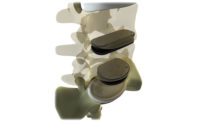PASADENA, CA-A new robotic arm destined to dig deep into Mars' polar crust has been completed by Alliance Spacesystems Inc. (ASI), and delivered-one month early-to NASA's Jet Propulsion Laboratory for integration onto the Mars Phoenix lander, due for launch to the Red Planet next year.
It will be the first trenching device to visit Mars, and has a different capability than the robotic arms ASI built for the Mars rovers Spirit and Opportunity, says René Fradet, ASI president and CEO. "The robotic arm for Phoenix works like a mini-backhoe and is designed to dig a two-foot deep trench in Mars' north-polar region," Fradet says. The long-lived robotic arms on the rovers, meanwhile, perform more delicate tasks, precisely moving cameras and other instruments close to rock and soil targets.
Phoenix mission scientists anticipate that the robotic arm will uncover a layer of water ice near the surface of Mars' northern plains, where Phoenix, equipped with small thrusters, is scheduled to softly touch down in late May 2007. At the business end of the arm is a scoop about the size of a garden trowel that will do the digging down to a potentially rock-hard ice layer. In addition, a drill will penetrate, break up and retrieve hard ice samples for scientific study.
Endowed with four degrees-of-freedom and a 7.5-foot reach, the aluminum and titanium device weighs less than 22 pounds. The agile arm also will deliver Mars soil and, scientists hope, frozen water samples to the suite of scientific instruments on the lander for close-up study. A camera will also be mounted on the arm to provide a view of layers in the trench wall. The three-month mission is expected to yield new clues to the history of water on Mars and whether the environment was ever conducive to life.
The delivery of the Phoenix arm follows the recent announcement of a merger between ASI and Vision Composites (Signal Hill, CA). Due to take effect July 1, the merger will enable the combined companies to provide aerospace customers with a single resource for the design and fabrication of composite space structures.
The Mars Phoenix spacecraft, scheduled for launch from Cape Canaveral, FL, in August 2007, is being built by Lockheed Martin Space Systems, Denver. NASA's Jet Propulsion Laboratory manages the project.


